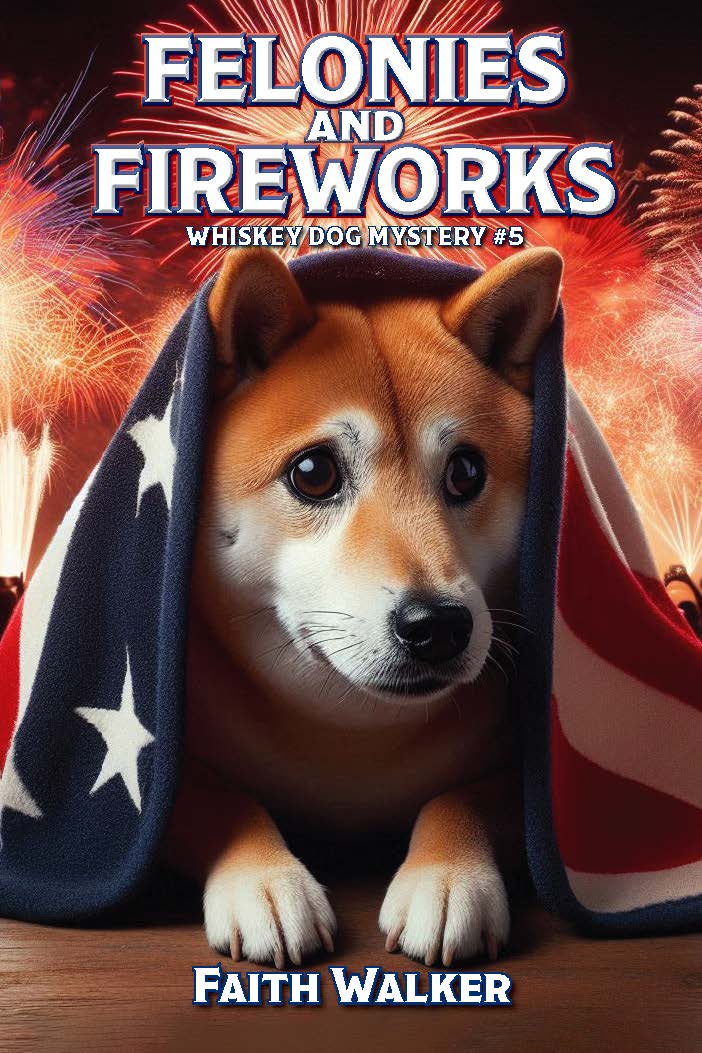 Here are 35 interesting facts and statistics about the publishing industry (as of recent years through 2024): 📚 General Industry Facts
📈 Trends and Growth 7. Audiobook sales have grown by double digits annually for over a decade; in 2023, U.S. audiobook revenue exceeded $2 billion. 8. E-books make up around 20-25% of the U.S. trade book market. 9. Print books still dominate, making up about 65-70% of all book sales in the U.S. 10. BookTok (TikTok’s book community) has significantly influenced publishing, boosting sales of certain titles by over 700%. 11. The #BookTok hashtag has over 200 billion views, driving backlist sales of YA, romance, and fantasy. 12. Children’s books remain one of the most consistently growing sectors, especially in illustrated and educational categories. 13. Hybrid publishing models are on the rise, offering authors more flexibility between traditional and self-publishing. 🖨️ Print vs. Digital 14. Paperback books are the most popular format, followed by hardcover, then e-books. 15. Despite digital growth, print book sales in the U.S. rose 10.8% from 2019 to 2021, driven by pandemic reading. 16. Hardcover books account for about 30% of unit sales but generate higher profits than paperbacks. 📖 Self-Publishing 17. In 2023, Amazon KDP (Kindle Direct Publishing) published over 1.4 million books. 18. Self-published authors can earn up to 70% royalties on Amazon, compared to 10–15% with traditional publishers. 19. More than 50% of self-published authors never make more than $1,000, but a growing segment earns full-time incomes. 20. Romance, fantasy, and sci-fi dominate self-publishing, due to strong fan bases and serial storytelling. 📊 Sales and Revenue 21. The top-selling book genre in the U.S. is romance, followed by mystery/thriller and fantasy. 22. Backlist titles (books older than 12 months) make up about 60–70% of publishers' sales. 23. Bookstore chains are declining, but independent bookstores have grown by over 35% in the past decade. 24. The most expensive first edition ever sold was a copy of The Birds of America by John James Audubon, which sold for over $11 million. 🌍 Global Publishing 25. China is the second-largest book market, followed by Germany, Japan, and the UK. 26. The Frankfurt Book Fair is the world's largest trade fair for books and rights, dating back to 1949. 27. The UNESCO World Book Capital program highlights a different city each year for promoting books and reading. 📱 Technology & Innovation 28. AI and machine learning are now used to generate book blurbs, analyze reader habits, and even write books. 29. Print-on-demand (POD) has revolutionized how small publishers and authors manage inventory and reduce costs. 30. Blockchain in publishing is being tested for copyright protection and royalty transparency. 👥 Demographics & Reading Habits 31. Women buy more books than men, accounting for about 65-70% of all book purchases in many markets. 32. Young adult fiction is often read by adults, with estimates showing that over 55% of YA readers are over 18. 33. Library use remains high, with more people in the U.S. visiting libraries annually than going to the movies (pre-pandemic). 📚 Miscellaneous & Fun Facts 34. The average traditionally published book sells about 2,500 copies in its lifetime. 35. J.K. Rowling was rejected by 12 publishers before Harry Potter and the Philosopher’s Stone was accepted—now it's part of a franchise worth over $25 billion.
0 Comments
 Great characters are the heartbeat of unforgettable fiction. Whether it's the brooding complexity of Heathcliff in Wuthering Heights or the moral ambiguity of Walter White in Breaking Bad, characters with depth, authenticity, and purpose invite readers into the emotional center of a story. Creating such characters is not merely about physical description or clever dialogue—it involves understanding motivation, contradiction, growth, and the quiet, often unseen internal lives that drive their actions. Here’s how to craft memorable characters, with examples from literature that exemplify these principles in action. 1. Give Characters Desires and Fears Desire is the engine of character. What a character wants—and what they fear—drives plot, decisions, and transformation. These internal drivers must be as specific as possible. Take Jay Gatsby from F. Scott Fitzgerald’s The Great Gatsby. Gatsby desires Daisy Buchanan, but beneath that desire is a yearning for identity, status, and a reclaiming of a romanticized past. His fear of being seen as unworthy—rooted in his origins—shapes his extravagant persona and choices. The power of Gatsby’s character lies in how his desire collides with an unreachable ideal, ultimately leading to tragedy. Likewise, Katniss Everdeen in Suzanne Collins’ The Hunger Games wants to protect her sister, but she also comes to fear becoming a pawn of the Capitol—or worse, becoming indifferent to violence. This duality adds emotional stakes to her role in the revolution and deepens her character beyond just a dystopian heroine. Writing Tip: Ask, “What does my character want more than anything—and what are they terrified of losing?” 2. Create Internal Conflict and Contradiction People are not consistent—and neither should fictional characters be. Complexity often arises from contradiction: a character can be brave and insecure, loving but manipulative, principled but occasionally dishonest. Consider Severus Snape from J.K. Rowling’s Harry Potter series. Initially painted as a villain, Snape is later revealed to be motivated by love, loyalty, and guilt. He’s cruel, brave, selfish, and self-sacrificing all at once. His contradictions make him one of the most compelling characters in the series. Similarly, in Beloved by Toni Morrison, Sethe’s internal conflict revolves around motherhood, memory, and trauma. Her most controversial act—killing her child to save her from slavery—is born from love and horror. Morrison doesn’t ask readers to forgive or condemn but to feel the weight of Sethe’s experience. Writing Tip: Give your character a contradiction that complicates how they pursue their goals—and how others see them. 3. Show Character Through Action What a character does reveals who they are. It’s not enough for a narrator to describe someone as courageous or kind—the reader must see those qualities in action. Atticus Finch, in Harper Lee’s To Kill a Mockingbird, demonstrates integrity and moral courage by defending Tom Robinson, a Black man unjustly accused of rape, in a deeply racist Southern town. His choices in the courtroom and the calm patience with which he teaches his children define his character far more than exposition ever could. In Celeste Ng’s Everything I Never Told You, the actions and inactions of the family members—particularly the silences and the things left unsaid—reveal their personal limitations, grief, and unfulfilled desires. Lydia’s drowning isn’t just a plot point; it’s a culmination of a family’s failure to understand and communicate. Writing Tip: Reveal character traits through behavior under pressure, not through adjectives or exposition. 4. Build a Rich Interior Life Characters become real when readers understand not just what they do, but how they think, rationalize, hope, and self-deceive. The interior monologue can turn even a quiet character into a vibrant presence. In Mrs. Dalloway by Virginia Woolf, Clarissa Dalloway’s external life—preparing for a party—seems mundane, but her interior thoughts reveal her longing, regrets, and reflections on life and death. The novel’s stream-of-consciousness style invites the reader directly into her mind, allowing empathy to form. Similarly, Eleanor Oliphant in Gail Honeyman’s Eleanor Oliphant Is Completely Fine initially appears strange, even comical. But as readers gain access to her thoughts—her loneliness, coping mechanisms, and gradual opening to connection—they grow to love her. Writing Tip: Use free indirect style or internal dialogue to allow readers access to the character’s emotional and intellectual processing. 5. Let Characters Change (or Resist Change) Dynamic characters often undergo transformation. Their journey—from ignorance to awareness, from self-protection to openness—is a key element of character-driven fiction. In Elizabeth Strout’s Olive Kitteridge, Olive is blunt, judgmental, and emotionally distant. Yet over the course of interconnected stories, she softens, grieves, learns to love again, and becomes more reflective. Her change is subtle but profound. That said, a character’s refusal to change can also be powerful. In No Country for Old Men by Cormac McCarthy, Anton Chigurh is terrifying not just because of his violence but because he remains resolutely consistent in his moral code. He is implacable—he believes in fate, and he does not grow. This static nature defines him and makes him a force rather than a man. Writing Tip: Identify a moment when your character might change—and decide whether they do or don’t. Both choices reveal something essential. 6. Give Even Minor Characters Dimension While your protagonist may get the most focus, supporting characters shouldn’t be mere archetypes. Even walk-on characters benefit from a touch of specificity. In The Brief Wondrous Life of Oscar Wao by Junot Díaz, even side characters like La Inca or Yunior, the narrator, are given rich backstories and distinct voices. Their vividness deepens the narrative world and makes Oscar’s story more resonant. In Little Fires Everywhere by Celeste Ng, secondary characters like Pearl and Moody have their own arcs and inner lives, demonstrating how different characters perceive and react to the same events. Writing Tip: Give minor characters at least one defining trait, habit, or contradiction to make them memorable. 7. Use Dialogue to Express Character How someone speaks—what they say and what they don’t—can reveal class, education, emotional state, cultural background, and personality. In The Catcher in the Rye, Holden Caulfield’s voice—sarcastic, disaffected, and sensitive—is unforgettable. His dialogue carries the full emotional and psychological weight of his adolescence and grief. In Where the Crawdads Sing by Delia Owens, the dialogue of townspeople versus Kya, the protagonist, illustrates differences in education, class, and experience. Kya’s few words carry weight, and her silences are equally powerful. Writing Tip: Give each character a unique voice—through sentence structure, vocabulary, rhythm, or worldview. Creating great characters takes time, empathy, and attention to detail. By grounding them in desire, contradiction, and action—and by revealing their inner lives—you allow them to transcend the page and live on in the minds of readers. The most beloved characters in literature are those who feel real, whose choices make us cheer or cry, and whose truths reflect something essential about the human condition. As novelist John Gardner said, “The writer’s job is not to solve the problem but to state the problem correctly.” The same applies to characters: your goal is not to explain them but to reveal them in all their flawed, fascinating humanity. Felonies and Fireworks, by Faith Walker, was released before Independence Day. It is the fifth book in the Whiskey Dog Mystery series, featuring Sarah Carter, owner of Carter's Canine Coiffure and her adorable sleuth hound Australian red heeler cattle dog Whiskey.
This book takes place during the week leading up to the town's annual Fourth of July celebration and includes a murder and the burglary of numerous homes and businesses. Before fireworks light up the night sky, Sarah and Whiskey must uncover the truth before a killer strikes again in their close-knit community. Sold everywhere books are so if you aren't over fireworks and patriotism, and you love animals and cozy mysteries, this book is for you.  In Write and Thrive in 2025, Course Three, we have been discussing and practicing innovation in fiction and nonfiction and the benefits that innovation can bring to a work. Innovation in writing is not simply about new words or unusual formats; it is about transforming how stories are told, how information is conveyed, and how readers experience language. Innovative writers challenge conventions—of genre, structure, voice, or even syntax—to spark deeper thought, surprise the reader, and often reflect the complexity of the world in novel ways. From fiction to nonfiction, literary innovation has allowed authors to explore new terrains and break boundaries that once seemed immovable. Here are several examples (including books I taught more 10-20 years ago) that showcase the power of innovation in both fiction and nonfiction. Fiction: Reshaping Narrative and Voice 1. Jennifer Egan’s A Visit from the Goon Squad Egan’s Pulitzer Prize-winning novel defies traditional narrative structure. Each chapter features a different character, tone, and even timeline, creating a mosaic of interlocking stories. Most notably, one chapter is told entirely through a PowerPoint presentation. This slide-deck format, filled with diagrams and bullet points, may seem more suited for a boardroom than a novel, yet it conveys the emotional landscape of a young girl navigating her family life with piercing clarity. Innovation Highlight: Visual storytelling within a traditionally text-only medium, nonlinear narrative, shifting points of view. 2. Mark Z. Danielewski’s House of Leaves This cult favorite reimagines what a novel can be. Structured like a labyrinth, “House of Leaves” tells the story of a documentary that may or may not exist, annotated by a man descending into madness. The book features footnotes within footnotes, mirror-image text, sideways pages, and passages with only a few words—forcing the reader to physically rotate the book or turn it upside down. Innovation Highlight: Physical manipulation of text to mirror thematic content, layered narratives, and typographical experimentation. 3. Italo Calvino’s If on a Winter’s Night a Traveler Calvino’s postmodern classic opens with “You are about to begin reading Italo Calvino’s new novel...” and immediately places the reader in the story as a character. The book proceeds as a series of unfinished novels, each interrupted just as the plot thickens. It’s a meta-narrative that explores the act of reading and storytelling itself. Innovation Highlight: Second-person narration, metafictional framing, fragmented structure that critiques traditional storytelling. Nonfiction: Reimagining Form and Approach 4. Maggie Nelson’s The Argonauts In this genre-defying memoir, Nelson blends personal narrative with critical theory, discussing gender identity, motherhood, and queerness. She cites philosophers like Judith Butler and Roland Barthes alongside deeply intimate reflections on her life with her transgender partner. Her style is fragmentary and poetic, unbound by traditional chapter headings or linear storytelling. Innovation Highlight: Hybrid form merging memoir and theory, poetic structure in nonfiction prose, fluid genre boundaries. 5. Truman Capote’s In Cold BloodOften credited with creating the nonfiction novel, Capote’s account of the 1959 murders of the Clutter family in Kansas reads like a suspense thriller. He employed fictional techniques—such as dialogue reconstruction, multiple points of view, and atmospheric setting—while maintaining a foundation in factual reporting. Innovation Highlight: Narrative nonfiction that reads like a novel, scene-by-scene construction, psychological insight into real people. 6. Claudia Rankine’s Citizen: An American Lyric Rankine’s work blurs poetry, essay, image, and cultural criticism. “Citizen” addresses the realities of racism in contemporary America through prose poems and visual media. She seamlessly integrates personal narrative with public events, such as Serena Williams’ experiences with racism in tennis, inviting readers to navigate layers of systemic bias and microaggressions. Innovation Highlight: Multimedia approach to nonfiction, poetic nonfiction, interplay between image and text. The Role and Purpose of Innovation in Writing So why innovate? For many writers, breaking conventional molds isn't just about being different—it’s about telling a story in the only way it can truly be told. Innovation often reflects the content or themes of a work: Egan’s fragmented storytelling mirrors the fractured identities of her characters; Danielewski’s typographic chaos embodies the psychological terror of a haunted house; Nelson’s hybrid form mirrors the fluidity of gender and love. Moreover, innovation allows for deeper reader engagement. It forces readers to become more active participants—to flip, re-read, re-think. It reflects the complexity of modern life and offers new tools for empathy, critique, and connection. Innovation in writing expands what we believe is possible on the page. It stretches genre, challenges our expectations, and reshapes how stories are told and remembered. Whether through fragmented structure, multimedia integration, or unorthodox voice, innovative writing leaves a lasting mark—not just on the literary world, but on how we understand human experience. Writers and readers alike benefit from this evolution. After all, literature thrives when it refuses to stand still. |
AuthorJill L. Ferguson Archives
October 2025
Categories |

 RSS Feed
RSS Feed